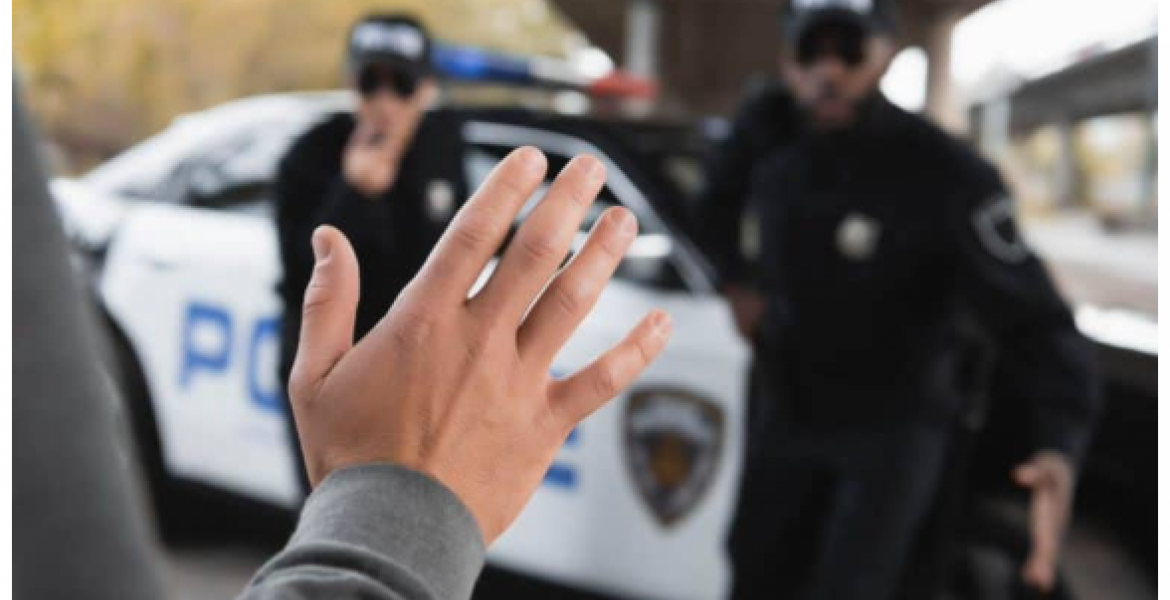Crime statistics may be up in San Angelo overall, but the crime rate is down at Angelo State University, and that’s something Lieutenant Marcus West and the 10 officers who patrol the university feel proud of considering the student population growth to over 8,000 this fall and the violent crimes plaguing the city.
“I think we, as a department and as a university, do a good job of responding to crime as well as doing the best job we can at preventing the crime,” West said. “As a department, we are very proactive. We expect our officers to be out patrolling and being on foot patrol to try and cut that criminal element off before [it] gets on campus, or at least deter it a little bit.”
Recently, the Department of Public Safety released crime statistics for Texas based by agency and county for 2014. Tuesday, the ASU Police Department released its own 2015 Campus Crime and Fire report that shows the crime rates for the university from 2012 to 2014, a three year reporting requirement per the Jeanne Clery Act, a consumer protection law that passed in 1990. According to the act, all colleges and universities that receive federal funding must share public information about crime on and around campuses in an effort to improve campus safety.
Thus, in compliance with the statute, the 2015 report shows that Angelo State remains, and has been recognized, as one of the safest universities in the nation. According to College Factual, a trusted national online resource that ranks and compares colleges and universities, ASU earned an overall score of B when compared to reported “on-campus, city and regional crime against all other schools nationwide.” Although ASU has on average reported crimes typical of colleges and universities, the crime in San Angelo and the surrounding areas weigh in the overall ranking.
“When compared with other towns and cities nationwide, San Angelo ranks above average in overall crime, making it about average in terms of safety and not especially likely students that Angelo State may fall victim to a crime when venturing off campus,” stated College Factual.
College Factual, along with DPS, showed that as far as violent crime goes, aggravated assault takes front and center, but ASU has witnessed a decrease while theft remains a constant.
“If you look at the number of violent crimes, a lot of those are zeroes, and assaults are generally not just random assaults. It’s usually between two parties who know each other,” West explained. “We feel even better about the numbers being where they are. Theft is a big issue; it always has been. I don’t think we’re ever going to stop that. If you think about it, this is a big shopping center. It’s an open campus, which makes it difficult. There’s a lot of things there that are negatives, but if you look at just the numbers, it looks like we’re doing a pretty good job.”
According to the report, the areas of violent crimes that do have numbers populated into them include the following:
- Sexual Offenses: For forcible offenses, the number increased from one to six on campus from 2012 to 2014, and from one to four in the residence halls. For non-forcible offenses, the numbers dropped both on campus and in residence hall offenses from one to zero during the same time frame.
- Aggravated Assault: Aggravated assaults on campus and in the residence halls dropped from one to zero. There was one assault on public property only in 2012.
- Burglary: On-campus burglaries dropped from six in 2012 to two in 2014, and from five to two in the residence halls. Three burglaries were reported in 2012 under non-campus incidents.
- Motor Vehicle Theft: Only one motor vehicle theft was reported in 2013 on campus.
- Simple Assault: Simple assaults went from one to zero on campus and in the residence halls.
- Hate Crime: One hate crime was reported on campus in 2012.
- Dating Violence: Date crimes went up from one to four in 2013 and 2014 both on campus and in the residence halls.
- Stalking: Two incidents of stalking were reported in both 2013 and 2014 both on campus and in the residence halls.
- Liquor Laws Arrests: This remains one of the biggest issues on campus. From 2012 to 2013, the number of arrests on campus went up from 38 to 45, and dropped to 37 in 2014. In the residence halls, arrests went up from 18 to 32 in 2012 and 2013, and dropped to 22 in 2014. That number also dropped from two to zero for non-campus arrests and from six to one on public property.
- Drug Laws Arrests: Arrests dropped from 27 to 12 in this area from 2012 to 2014 on campus and from 15 to 11 in residence halls. They increased from two to eight on public property. However, between 2013 and 2014 public property arrests dropped from 12 to eight.
- Illegal Weapons Arrests: There was only one arrest in this area that occurred on public property in 2014.
As for judicial referrals, ASU saw a slight increase in the area of drugs, but a decrease in alcohol incidents. In addition, drug referrals went up three to 11 from 2012 and 2014 on campus and in the residence halls. Alcohol referrals, however, went down from 77 to 60 both on campus and in the residence halls.
Overall, West said he realizes all crimes don’t get reported. He also said theft-related and property crimes can be kind of deceptive because of the make up of the university and community surrounding the university. Also, sexual assault numbers are skewed as well. West said the numbers reflected are those offenses reported to law enforcement, student services or another a reporting department on campus; and often times, sexual assaults don’t get reported to ASU.
“I understand that people see [the numbers] and they say, ‘No way! There has to be way more than that occurring on a university campus,’” West noted.
Today, students who experience sexual assault can seek guidance with local agencies when dealing with sexual assault. They can now go straight to the Concho Valley Rape Crisis Center, which is why there remains a discrepancy in those numbers.
West stated, “Rape Crisis is a confidential reporting agency. That’s a benefit that’s given to rape victims, so that they can get the help they need even if they don’t want to pursue a public case.”
West continued that many sexual assault victims are afraid to come forward because there’s a stigma attached to the crime, and they don’t want their experience to go public.
Karla Payne, executive director of CVRCC, said the majority of the rape victims who go into their office belong to the college-age group. They are typically 14 to 24 years of age, and some of the victims have had some assault in their past or in their childhood.
Last year, a total number of 16 ASU students and three Howard College students went to Rape Crisis Center for sexual assault services, said Heather M. Hodge, director of Victim Services with CVRCC.
Payne noted those numbers can also be skewed.
“Sometimes we might get them a year or so after a sexual assault happened,” she said. “People typically are hesitant to report.”
Beyond these possible discrepancies, West said ASU hasn’t noticed an increase in crime as a result of growth, and ASU continues to be a safe university overall for students and those surrounding communities.
“We feel pretty good about that, and we think the community feels pretty good about it as well,” he said.
However, people have to keep in mind that university crime rates are kind of unique because the population changes regularly from year to year, so it’s not like a city with 100,000 people.
“There’s such a huge change in a university population year to year,” West noted. “You can compare the crimes, but it’s really not a true comparison because the type of crime changes. For example, there was a spike in burglaries, but that’s always been a problem. Also, there are the numbers that are the make up of a university itself, and the kind that corresponds with crime rates in the surrounding area in the city.”
West’s comments fall in line with the ranking provided by College Factual, and although ASU Police will not put zeroes in all the crime columns outlined this year, the numbers speak for themselves, especially amidst a population increase.
“You generally see an increase in crime, but that’s not the case here. We’re very pleased that those numbers haven’t increased like that,” West finalized.
Subscribe to the LIVE! Daily
Required






Post a comment to this article here: